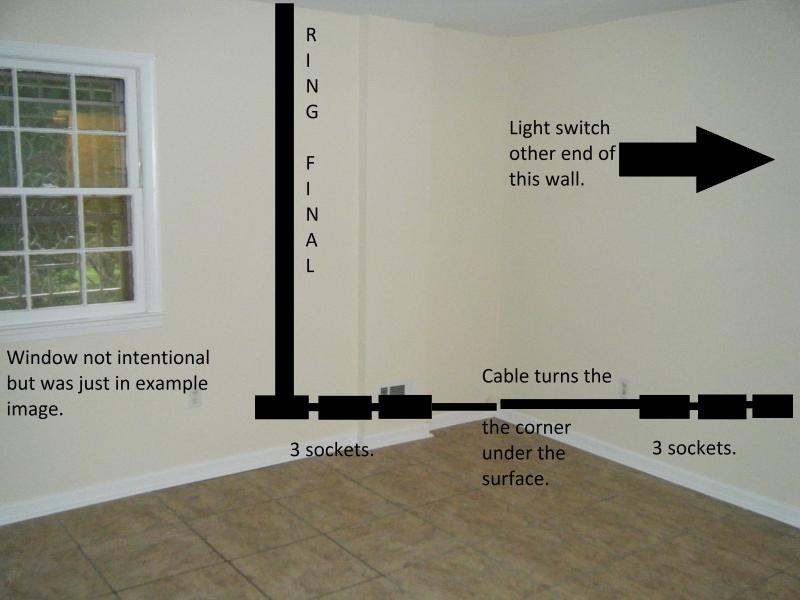Hiya Ladies and Gents 
Let me just start off by saying, could we please keep this discussion / debate friendly please... just for arguments sake (not that I'm stereotyping anyone)!
(not that I'm stereotyping anyone)!
Right... well I fully understand about chasing cables into walls and all the related 'do dar' along with it. Safe zones, chasing depth, capping, etc. etc...
But there is one thing I can't get my head around, and that's moving from one safe one to another.
If that makes any sense?
What I'm trying to describe is, for example if someone was chasing vertically down a nice block wall around 1m away from "being out the safe zone" / end of the wall doing things as normal, adds a nice flush mounted back box and socket in line with the new chasing for his/her nice new ring final (or whatever configuration they plan to use)... and then routes another chase horizontally going right or left until it's right up into the corner of the wall and then carrying on in the same direction across into the second wall/zone back so it's into the safe zone for the new wall and then another socket.
Is their chasing route complaint?
...I mean, your in a safe zone, doing things as you should, but then after your first couple of sockets you chase off horizontally to another set of outlets on a joining wall. Oh and I mean if you are only using CAPPING / OVAL CONDUIT.
I've never seen it done anywhere before so I didn't think it was allowed.
Until I managed to get the image below. Not exactly what I was describing but still exactly the same prinicable with regards to moving from one "wall / zone to another".
I'm not even sure if capping was used in that image (but I understand that's a whole different thing).
What I'm trying to get at here, is if the chasing isn't running directly in a "non safe zone" but just passing through it horizontally. Is this allowed?
I hope your understanding my question and not getting all confused here. Please excuse my poor descriptive capabilities
Anyway, thanks in advance for any good information / answers provided in your feedback.
Let me just start off by saying, could we please keep this discussion / debate friendly please... just for arguments sake
Right... well I fully understand about chasing cables into walls and all the related 'do dar' along with it. Safe zones, chasing depth, capping, etc. etc...
But there is one thing I can't get my head around, and that's moving from one safe one to another.
If that makes any sense?
What I'm trying to describe is, for example if someone was chasing vertically down a nice block wall around 1m away from "being out the safe zone" / end of the wall doing things as normal, adds a nice flush mounted back box and socket in line with the new chasing for his/her nice new ring final (or whatever configuration they plan to use)... and then routes another chase horizontally going right or left until it's right up into the corner of the wall and then carrying on in the same direction across into the second wall/zone back so it's into the safe zone for the new wall and then another socket.
Is their chasing route complaint?
...I mean, your in a safe zone, doing things as you should, but then after your first couple of sockets you chase off horizontally to another set of outlets on a joining wall. Oh and I mean if you are only using CAPPING / OVAL CONDUIT.
I've never seen it done anywhere before so I didn't think it was allowed.
Until I managed to get the image below. Not exactly what I was describing but still exactly the same prinicable with regards to moving from one "wall / zone to another".
I'm not even sure if capping was used in that image (but I understand that's a whole different thing).
What I'm trying to get at here, is if the chasing isn't running directly in a "non safe zone" but just passing through it horizontally. Is this allowed?
I hope your understanding my question and not getting all confused here. Please excuse my poor descriptive capabilities
Anyway, thanks in advance for any good information / answers provided in your feedback.



